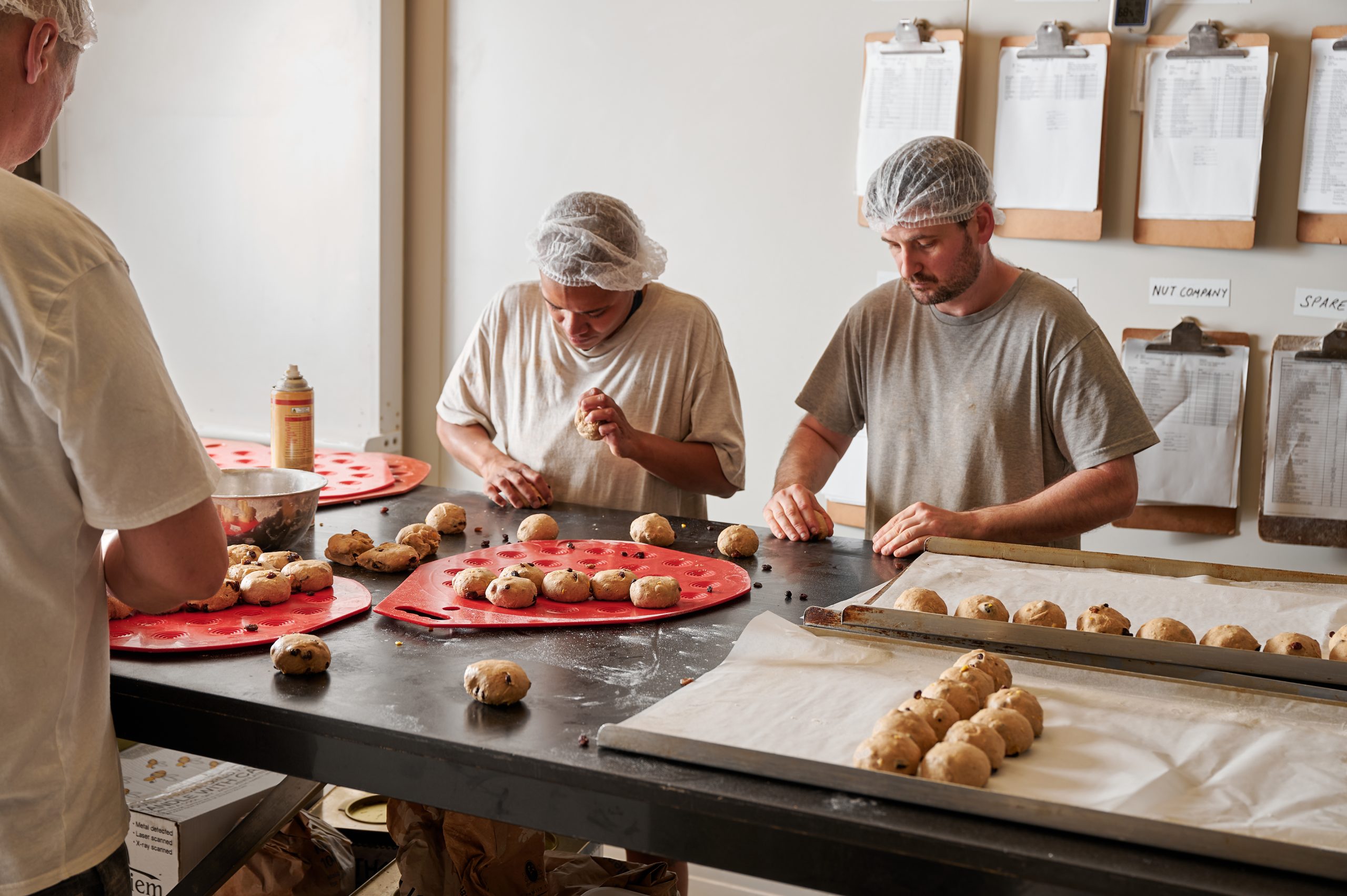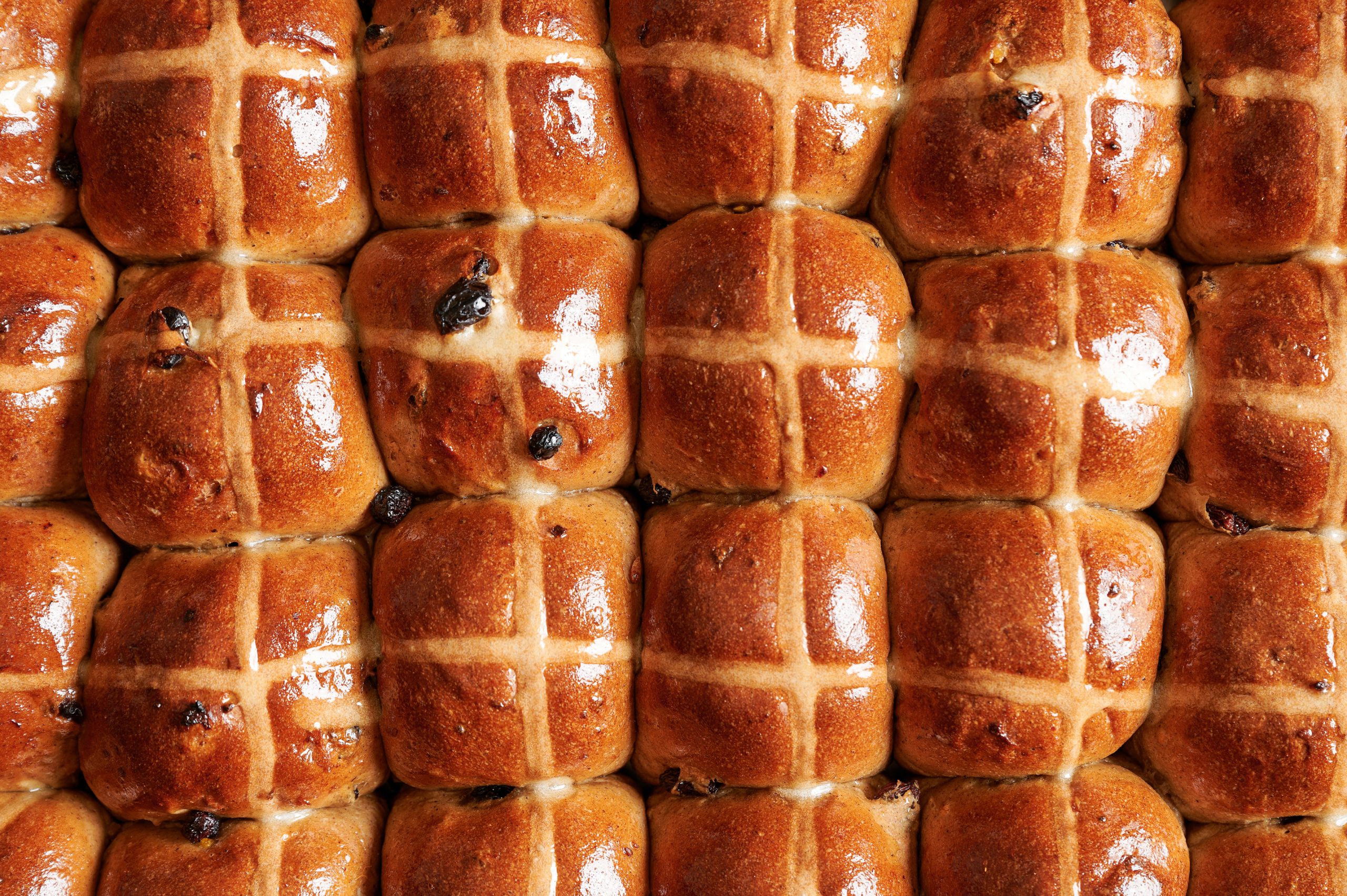Melbourne, Australia — To Kate Reid, the founder of Lune Croissanterie, there’s only one way to eat a hot cross bun: torn apart, with cold butter and salt, after a few minutes in the oven just to get the top crisp.
“The marriage of that cold, rich, creamy butter and the warming up of the bun just so it releases the spices and warms the fruit so it pops,” she said, “is truly the greatest combination.”
Reid’s love of the traditional Easter treat was born in a time, not so long ago, when Australians reserved hot cross bun consumption for one day of the year: Good Friday.
This year, she ate her first on Jan. 14.
She’s not alone in her eagerness. Once available for just one or two weeks of the year in Australia, hot cross buns have breached the confines of liturgical tradition to become an obsession that grips the nation as early as Boxing Day, the day after Christmas.
In a perfect storm of marketing opportunism, seasonal compatibility and a nostalgia for the time before the pandemic, hot cross buns — which have been enjoyed across the British Commonwealth for centuries — have established themselves as the pumpkin spice latte of Australia, a hotly anticipated, must-consume item of the season.
While the buns’ popularity has been on a steady rise for around a decade, the beginning of the pandemic just weeks before Easter in 2020 supercharged a desire for the reassuring embrace of citrus and spice.
Falco Bakery, which had opened its doors just four months before the holiday, sold more than 5,000 buns in the four days leading up to it. It has since become the purveyor of some of Melbourne’s most celebrated hot cross buns.
“People were really comforted by fats and carbohydrates,” said Jo Watson, a manager.
At Lune, the hot cross cruffin, a muffin-shaped, hot cross bun-spiced croissant, has been available since 2012. But the start of the pandemic and the croissanterie’s pivot to online orders sent demand into overdrive.



Australian fixation on the buns makes seasonal sense. With Easter arriving in autumn Down Under, the hot cross bun is the only festive offering inherited from British colonisers that remotely aligns with the country’s weather patterns. Unlike the indignity of preparing a roast turkey in high summer, when Christmas occurs, the buns are a spiced harbinger of cosier times ahead.
Elise Gillespie, a chief executive of Bakers Delight, the country’s largest franchise bakery, said that when in autumn Easter falls is one of the biggest determining factors of how many buns they sell. People would rather eat hot cross buns when it’s cool and rainy than when it’s hot and sunny, she said.
At artisanal bakeries and supermarkets, the buns are now sold in the hundreds of millions during their one- to three-month season. At Coles, one of Australia’s largest supermarket chains, sales of hot cross buns have soared by 40% in the past five years, and the company expects to sell more than 85 million hot cross buns this season. That’s more than three buns for every person in the country.
The hot cross buns flavour profile — cinnamon, ginger, nutmeg, clove and citrus — has found its way into all manner of products, from the consumable (cereals, ice creams, alcohol) to the inedible (candles, body butter, beard oils) to the wholly unexpected (puppy probiotics).
“In the last 10 years it’s really become a staple flavour” of fall, said Lewis Maschmedt, the head brewer of Pirate Life Brewing, which has made a chocolate chip hot cross bun-flavoured stout since 2020. “It signals the change of seasons. It’s decadent, it’s comforting.
“We don’t have many culinary traditions of that sort in Australia,” he added. “This is one we now do.”
Mike Kellett’s macro foods business, Macro Mike, has produced a hot cross bun-flavoured protein powder for the past three years. The Easter collection is consistently his most successful seasonal launch. “People will buy 15 or 20 bags to see them through the whole year,” he said.
About 90 miles from Melbourne, the wood-fired Scotch oven at Australia’s oldest continually operating bakery, Maldon Bakery, turned out its first hot cross bun in Maldon, Victoria, nearly 170 years ago. Rebecca Barnett, the owner, said she and her team would be “hung, drawn and quartered” by the townspeople if they deviated from the “fair dinkum” recipe: “The best one, the only one, the right one,” she said. “With mixed spice, vine fruits and citrus peel.”


While hot cross bun mania feels like boom time for some, for others, the novelty has worn off. Eighteen years ago, Tony Dench’s hot cross buns, made with both yeast and sourdough as well as whole puréed oranges, were a revelation in Melbourne, putting the insipid offerings of industrial bakeries to shame. For years, lines snaked around the block of his then cafe.
These days, the oversaturated marketplace feels less like a celebration to Dench, who now runs Dench Bakers Wholesale, and more like an obligation. The buns may be good for business and good for morale, he said. “But it’s good when they finish.”
This article originally appeared in The New York Times in April 2023.
